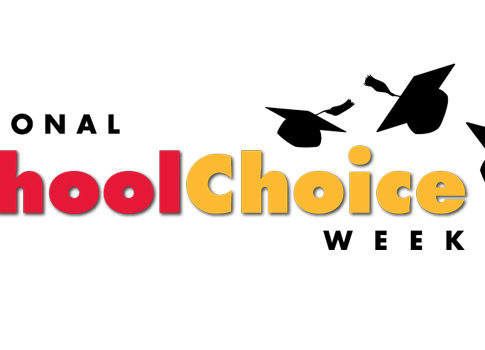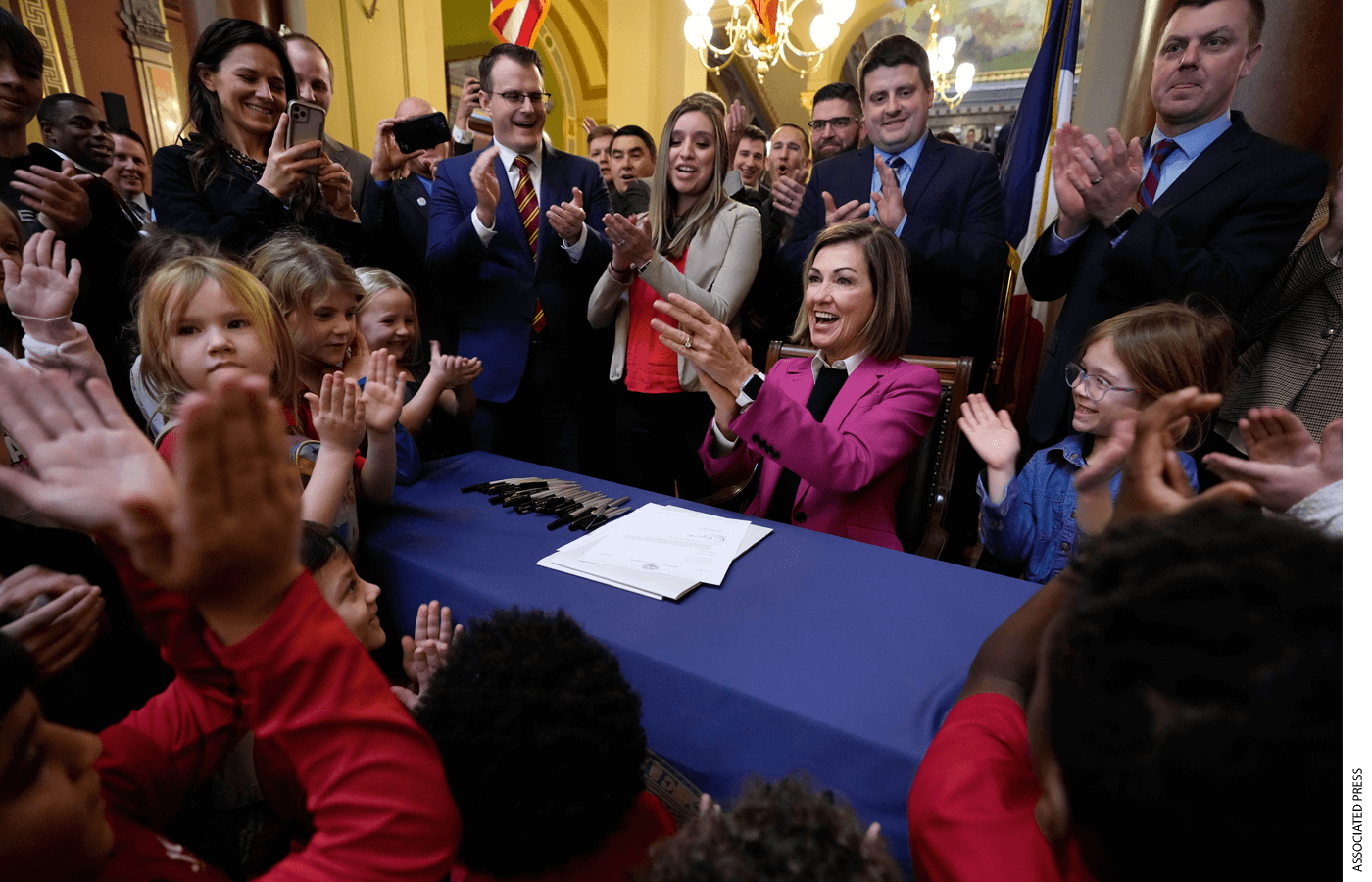
America is in the midst of a parental choice revolution. In the past few months, five states—Arizona, Arkansas, Iowa, Utah and West Virginia—have adopted education savings account, or ESA, programs, which extend private-school-choice eligibility to all or most K-12 students. These programs provide students with public resources for an array of education expenses, including tuition, micro-schooling, homeschooling, education therapies, and tutoring. Florida and Texas may soon join them, and other states seemed poised to adopt more modest private-school-choice programs.
Recently, Governor Ron DeSantis, a strong parental-choice supporter, questioned the wisdom of universal ESA programs, remarking, “I’d like to see the focus remain on … low income [and] middle class” families. DeSantis’s position is not unreasonable. For decades, parental-choice advocates have emphasized the need to expand the educational opportunities available to kids who lack the financial resources to exit public schools that fail them. As Howard Fuller, an architect of the nation’s voucher program, once observed, parental choice is today “more of a rescue mission than a fight for broad societal change.” And, Florida leads the nation in advancing that mission. Although 30 states have at least one private-school-choice program, nearly 25% of participating students reside in Florida, which has four.
There is tension between universal eligibility and this traditional case for parental choice: in universal programs, resources will necessarily go to wealthy children who do not need to be rescued. This is one reason that, until last summer, all private-school-choice programs restricted eligibility in one or more ways.
Unfortunately, as I detail in a new Manhattan Institute report, eligibility restrictions often impede the effective implementation of private-school-choice programs. While means-testing is relatively straightforward, it is frequently paired with other eligibility restrictions that undercut program effectiveness. For example, both parents and participating schools find it difficult to navigate programs limited to students attending “failing” public schools or school districts, as currently proposed in pending legislation in Georgia. Not only do most private schools draw students from multiple school districts, but the criteria for designating districts and public schools as “failing” vary across states (and from year to year within them); they are also subject to manipulation by regulators.
Restricting eligibility to students who were previously enrolled in a district public school—another common eligibility requirement—saves money. But it also excludes otherwise-eligible students currently enrolled in private schools, which can generate resentment among families who have sacrificed to pay private school tuition. Moreover, studies suggest that students almost always suffer some short-term learning loss when switching schools, so “switching” requirements are harmful to student learning. When these three eligibility restrictions—means-testing, a “failing” school or district, and prior public school enrollment—are combined, the result is many program participants arriving at their new schools in need of substantial remediation.
Other design elements also pose significant barrier to private-school-choice success. Approximately half of existing programs rely on tax policy to incentivize donations to nonprofits providing private-school scholarships. Many of these “scholarship-tax-credit” programs provide less than a one-for-one credit for donations to scholarship-granting organizations, impeding effective fundraising. For example, legislation pending in Nebraska would give donors a fifty percent tax credit for donations to a support private-school scholarships. Not surprisingly, fundraising efforts in these programs often fall short, and the scholarships amounts provided through them are lower than voucher and ESA programs.
Low scholarship amounts also are, in turn, a barrier to success. The scholarships provided in many programs are significantly lower than tuition at all but the most affordable private schools. For example, West Virginia’s ESA program provides an average of $4,200 to program participants, and a proposed ESA in North Dakota would provide only $1,500-$3,000. Low scholarship amounts tend to result in private-school-choice resources being used to fill empty seats in existing schools rather than incentivizing the creation of new ones.
While programmatic limitations often impede the successful implementation of private-school-choice programs, design defects alone are not to blame. Private schools, advocates, and philanthropists can and should do more after programs are enacted. Participating schools must be clear-eyed in considering their own academic shortcomings and resolve to improve. They must embrace transparency, recognizing that they now participate in complex educational markets where parents are consumers. And, they must engage the challenge of remediating participating students who have fallen behind, especially in the post-pandemic world. Especially in states with generous parental choice programs, schools and school systems should add capacity, open new schools, and create new school networks. For example, the charter management organization Great Hearts Academies recently announced plans to open a network of private classical Christian schools, Great Hearts Christos, which will participate in Arizona’s ESA program.
Advocates can also help recruit, inform, and onboard schools and other providers, and engage in the critical work of educating parents—especially low-income parents—about all the options now available to their children. And, as the footprint of private-school choice grows, philanthropists should not only generously support implementation efforts, but also lend their time and expertise to help develop strategies for ensuring that parental choice lives up to its transformational potential.
These are heady, exciting, days for proponents private-school choice. In many ways, our aspirations are being realized beyond our wildest imagination. To talk of “implementation” at this moment of celebration almost seems like bad manners. But the devil, as they saying goes, is in the details. Attention to those details, both before and after programs are enacted, will ensure that parental choice fulfills its advocates’ aspirations.
Nicole Stelle Garnett is a senior fellow at the Manhattan Institute and the John P. Murphy Foundation Professor of Law at the University of Notre Dame.





